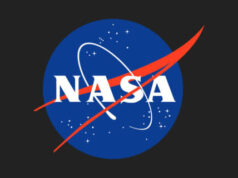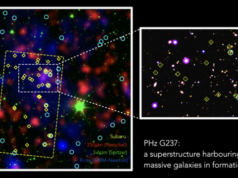Portals can allow the exploration of the dark sector with the Standard Model particles Portals mix or connect the dark sector particles with the Standard Model particles. Through the portals it is possible to explore the dark sector particles using the Standard Model particles. The portals play a basic and critical role in the study of the dark sector particles both theoretically and experimentally.
Credit: Image courtesy of Institute for Basic Science
Once upon a time, the Universe was just a hot soup of particles. In those days, together with visible particles, other particles to us hidden or dark might have formed. Billions of years later scientists catalogued 17 types of visible particles, with the most recent one being the Higgs boson, creating the ‘Standard Model’. However, they are still struggling to detect the hidden particles, the ones that constitute the dark sector of the Universe.
Scientists at the Center for Theoretical Physics of the Universe, within the Institute for Basic Science (IBS) have proposed a hypothetical portal that connects two possible dark sector particles; their research could open a new perspective into the murky understanding of the dark sector. Published in Physical Review Letters, this study has implications in cosmology and astroparticle physics.
Physicists have plenty of ideas about what these dark sector particles might look like. One candidate is the axion, which is a very light particle that can solve some theoretical problems of the Standard Model. Another candidate is the dark photon: A very light particle which shares some properties with one of the particles of the Standard Model, that is the photon, the constituent of visible light. However, while photons couple to the electromagnetic charge, dark photons couple to the so-called dark charge, that might be carried by other dark sector particles.
Physicists believe that the dark sector communicates with the Standard Model, via portals. For example, a vector portal would allow the mixing between photons and dark photons. And, an axion portal connects axions and photons. There are only several possible portals physicists have identified, and each portal is a major tool in theoretical and experimental studies in searching for dark sector particles. A team of IBS scientists, hypothesized the existence of a new portal they named the “dark axion portal” that connects dark photons and axions.
The central idea of the dark axion portal is based on the observation that new heavy quarks may also have a dark charge that couples to the dark photon. Through the heavy quarks, axion, photon, and dark photon can interact with each other.
Find your dream job in the space industry. Check our Space Job Board »
IBS scientists imagine that the dark axion portal could bring ideas for new experiments. So far, the axion search has been performed using only the axion portal, which connects the axion to a pair of photons (axion — photon — photon coupling). Similarly, the dark photon search has been performed using a different portal, namely a vector portal, which allows a small mixing between the dark photon and photon. The dark axion portal could link the two: “The dark axion portal suggests the first meaningful connection between the two physics, which have been studied separately: It connects the dots. This will allow reinterpretation of the previous data, and potentially make a breakthrough in the axion and dark photon searches,” explains LEE Hye-Sung, corresponding author of the paper.
Source: Institute for Basic Science.
Research Reference:
Kunio Kaneta, Hye-Sung Lee, Seokhoon Yun. Portal Connecting Dark Photons and Axions.Physical Review Letters, 2017; 118 (10) DOI: 10.1103/PhysRevLett.118.101802











